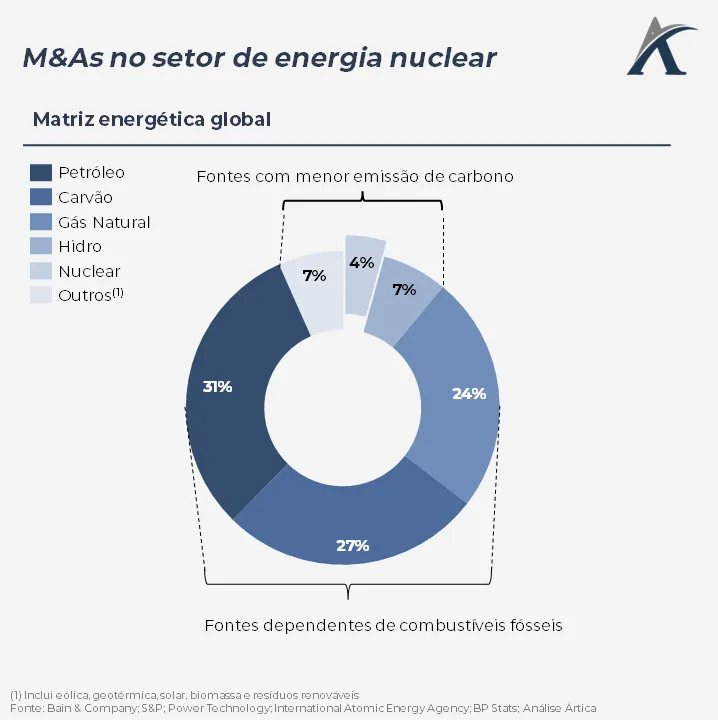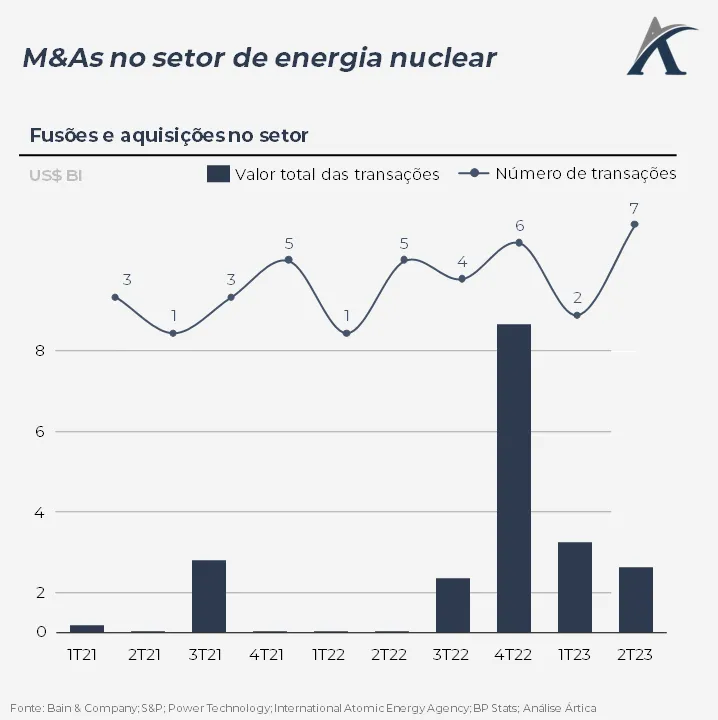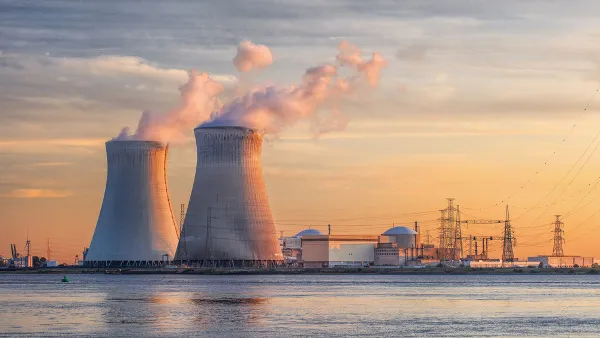J. Robert Oppenheimer lit the flame of the Atomic Age with the test of the first nuclear explosive in history (codenamed "Trinity") in 1945. However, a few years earlier, one of his colleagues in the Manhattan Project had given another purpose to the energy from the fission of atoms: Enrico Fermi and his team created the first nuclear reactor at the University of Chicago in 1942. Since then, reactors have gained ground in the global energy matrix – and today they are the second largest source of energy not derived from fossil fuels (behind only hydroelectric power).
As the transition agenda for a low-carbon economy advances, nuclear energy is once again gaining prominence. With companies racing to divest high-carbon assets and acquire assets that increase their energy efficiency, the percentage of energy transition-focused M&A deals valued at over US$1 billion increased from 201 billion to 271 billion between 2021 and the first nine months of 2022.
Atomic energy has been a key player in this movement, with the number and total value of nuclear transactions increasing during 2022 and 2023 (peaking at over US$1.4 billion in transactions in 4Q22). Despite this, its role in the energy transition remains uncertain.
Because it's a fossil-fuel-independent energy source—and with virtually zero greenhouse gas emissions—nuclear energy advocates see it as the primary tool for making the energy transition feasible. Furthermore, unlike other clean energy sources, nuclear reactors can operate 24 hours a day and are not dependent on weather conditions (as is the case with solar, wind, and hydroelectric power).
However, atomic energy faces some problems: keeping nuclear plants up to safety standards requires significant investment – operators have spent around US$1,400,000 worldwide to improve safety since the Fukushima incident in 2011. Furthermore, the generation of radioactive waste and accidents such as those at Chernobyl and Fukushima are cited by those who argue that nuclear energy should not be the protagonist of the energy transition.








